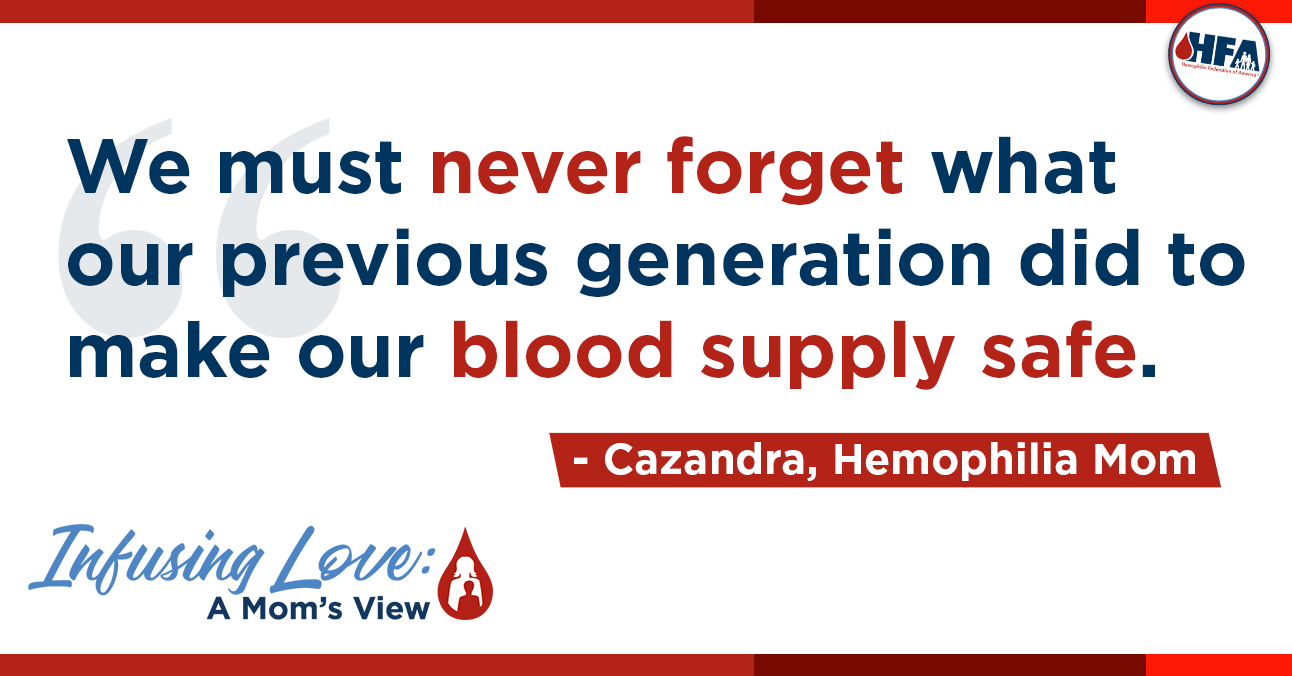
I attended my first, big, national hemophilia conference in 1997. My son, Julian, was 2 years old and I was scared to death. The enormity of it was almost too much! The exhibit hall with giveaway after giveaway (I had no idea that my son was seen as a dollar sign to some), huge displays from home care and pharmaceutical companies, people from all over the country, but the scariest part? The people protesting. There was one individual who was very vocal and graphic in his protests against a specific pharmaceutical company and his image is burned into my memory.
There I was with a 2-year-old trying to figure out an inhibitor and this is the kind of stuff I was seeing. The number of men in wheelchairs, using crutches and walking with terrible limps took my breath away. Was this what was in store for my beautiful Julian? The doctors had been so hopeful in our conversations. What had I missed?
Fortunately my family missed the bad blood epidemic in the 1980s when the blood supply was tainted with the HIV virus. However, it was given to thousands of people being treated for bleeds. When we were introduced to hemophilia, we were told we would be the “first generation to have factor products without whole blood” in the community. It was a saving grace for those who were newly diagnosed. It meant that the chances of HIV were extremely small and that a life of “normalcy” was possible.
This past summer I attended the same big, national hemophilia conference, but I noticed something missing. I didn’t see as many people in wheelchairs or using walkers and crutches. The protesting against pharmaceutical companies has not been nearly as visible for many, many years. And when I attended the Remembrance and Celebration of Life service for those who have passed in our community, there were barely 25 people in attendance. It broke my heart.
I have made it a point to attend these services for the past seven years since I learned a family secret: my older brother died from complications from hemophilia shortly after birth. What I didn’t realize back at that meeting in 1997 was how much I would have in common with this generation of “older” men. I feel a connection to them because I imagine that if my brother would have lived, he may have HIV/AIDS and still be here fighting the good fight and loving on my sons. Or maybe if the doctors had known about his brain bleed and had been able to treat him he could have completely missed being infected and be one of these mighty men in our community mentoring others, especially my sons.
If we have a family connection or not with someone who has passed from complications of a bleeding disorder we need to remember that this generation went through something horrific! We learned from it, the blood supply is safer, products are better, more effective, and even longer lasting. I remember back in those early days of our diagnosis hearing about one day seeing products that would last longer. It seemed like a dream, and here we are.
I like to think that when I see a little kid with hemophilia running around playing baseball or soccer that the painful legacy the families of the 1980s left for us helped to make lives better for those now and yet to come.
Lest we forget. If you want to read more about the history of hemophilia, visit HFA’s interactive history timeline. Â
Cazandra lives in New Mexico with her husband, Joe, and sons, Julian and Caeleb.
___________________________________________
*Note: “Infusing Love: A Mom’s View,” is a blog collection of personal opinions and a representation of individuals experiences. While extensive efforts are made to ensure accuracy of the content, the blog entries do not represent HFA or its Board of Directors. The blog is also not intended to be construed as medical advice or the official opinion/position of HFA, its staff, or its Board of Directors. Readers are strongly encouraged to discuss their own medical treatment with their healthcare providers.Â



